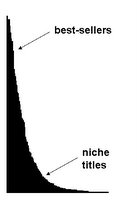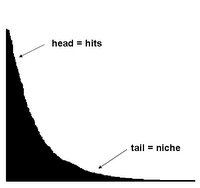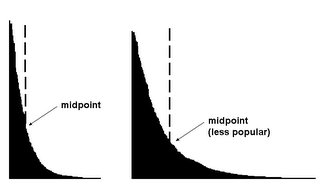Squid Labs is a Bay Area engineering consulting firm. They sponsored an informal salon that pulled together a couple dozen presentations, described (roughly in the order they were presented) below.
- Laser-scored origami: An origami artist showed off some of the creations he made by using a computer-controlled laser-cutter to pre-score the fold lines into the paper. The scoring let him expand his already impressive range of work to include even more complicated forms, including curves.
- Yew bow: At the previous salon, someone demonstrated how to shoot arrows using a bow made from cross-country skis. This time the material of choice was a 5-foot-long yew branch (collected from fallen wood, of course, since everyone knows it has better properties :). Notable quote to encourage audience participation: “I‘ve got arrows; we’ve got an alley”.
- Pop-up font: You know those pop-up books that make all kinds of shapes lift up when you open the pages? Saul wanted to make some pop-up text, so he designed a font, complete with fold marks, that he could use to drive the laser-cutter to cut and score any message he wanted in cardboard.
- Holiday crackers: A couple of people showed us how to make holiday crackers from readily available material. They bought some “pull string get spark” starters in Chinatown, a variety of flash cotton, paper, and string at a fireworks supply site, and assembled several crackers while riding BART to the salon. Their version is more dramatic than the commercial variety – pulling the string produces a 6” burst of flame. (My 4-year-old son loved the spare that I brought home.)
- Microwave fun: I’ve seen microwaving a light bulb to get it to light up; I hadn’t ever thought of putting the base in a cup of water to keep it from sparking. Another fun trick – measure the frequency of your micro's wave’s by using thermal paper (e.g. from an old fax machine) pressed to a wet paper towel – you’ll see “hot spots” separated by the wavelength (in this case 12.2cm). And finally – microwave grape plasma - tricky to make work, but impressive if you pull it off.
- Racecar shoes: A shoe designer showed an early prototype of some new kids sneakers. They look like little racecars, with the bonus feature that if you hold the “key” next to the sneaker, the headlights turn on and you hear the “engine” revving up.
- Cyclist air filter: A bike commuter decided to do something about breathing car exhaust every day, so he rigged up a personal HEPA air filter out of a vacuum cleaner bag in a backpack, some tubing, and a dive mask/snorkel. (When asked if he actually wore the rig in public, he responded “no comment”.)
- Flocking birds fight cybercrime: A researcher at Paypay described and demonstrated an approach for finding needles of fraud in a haystack of transaction data by using an approach called particle swarm optimization. The first step (which is proprietary and wasn't discussed) is determining what fraud smells like. The second step is, roughly speaking, to turn a flock of virtual birds loose on your data and have them all look for bad-smelling regions. The trick he showed was having each bird respond to a mix of "social" (look where the flock has had the most success) and "individual" (look where I've had the most success) motivation, resulting in collective behavior that was pretty good at finding global peaks while avoiding getting trapped on top of local hills.
- Shared bike lockers: One of the people working on the Bike Link project for getting more use out of bicycle lockers at rapid transit stations described and demoed the core technology.
- LED bike wheel: Another bicycle commuter (we were near Berkeley :) showed off the light show he built onto his wheel By hooking up four spoke-aligned rows of red/green/blue LEDs to a programmable microcontroller at the hub, he's able to create dozens of different patterns (many vaguely Spirograph-like) as he rides.
- Wireless motes: Elaine Cheong from Berkeley showed us some prototype “motes” (miniature distributed sensors that communicate wirelessly), and demonstrated some software for simulating their behavior.
- Sample size = 1: A paper by Seth Roberts (of Berkeley) was summarized (not by Seth). The paper describes a variety of physiological and psychological experiments he ran on himself over several years. One of the more interesting results was successfully changing his body's target weight (it's "set point") by regularly consuming flavorless calories in the form of sugar water. The presenter was in the process of trying to duplicate the results on himself.
- Pedal light: Another bicyclist showed a way to build a mini-generator into existing bike pedals, so that your pedaling would automatically light up some rear-facing LED’s.
- ROKR replacement: a Motorola employee showed us his design for a better combined cell-phone/music player than the ROKR – he velcroed an iPod Nano to the back of a Motorola Razr, and demonstrated all the resulting features (including the ability to balance vertically while sitting on your desk). (Your call how far his tongue was in his cheek.)
- Consciousness and God: Frank Heile presented a paper on Primary & Symbolic Consciousness, in which he suggests that humans have two parallel mechanisms for processing and responding to the world. The lower-level one is often in charge, but the higher-level one is the one that uses words, and hence the one in which our sense of identity resides. He suggests that at least part of the reason humans have a concept of God comes from the interplay between these two systems.
- Monetizing plastic: The inventor of a clever new plant hanger, Hangit, talked about his quest to make money from a cheap piece of plastic. (He cited that little table-shaped thing that keeps the top of the pizza box from sticking to the cheese as one of his inspirations.) He successfully created and shipped a useful-sounding product; it's too early to know if he will be equally successful at making money from it.
- Aero lamp: One of the designers of an airplane-shaped lamp made from laser-cut aluminum and steel talked us through the design process. One interesting point – they decided to “open source” the design, so anybody could build their own copy of the lamp if they had the right tools/materials. Another point – the economics of China. In quantity 1, it cost the designers $400 to build a lamp. In quantity 10, it would cost them $200 each. If they ordered 1000 from China, the cost would drop to $25 apiece.
My personal reaction - "wow". I love living in a world where people have that much passion on that many different topics, and have the right mix of persistence and knowhow to turn their passions into practice. Next time, I intend to have something of my own to show off.
- dG


